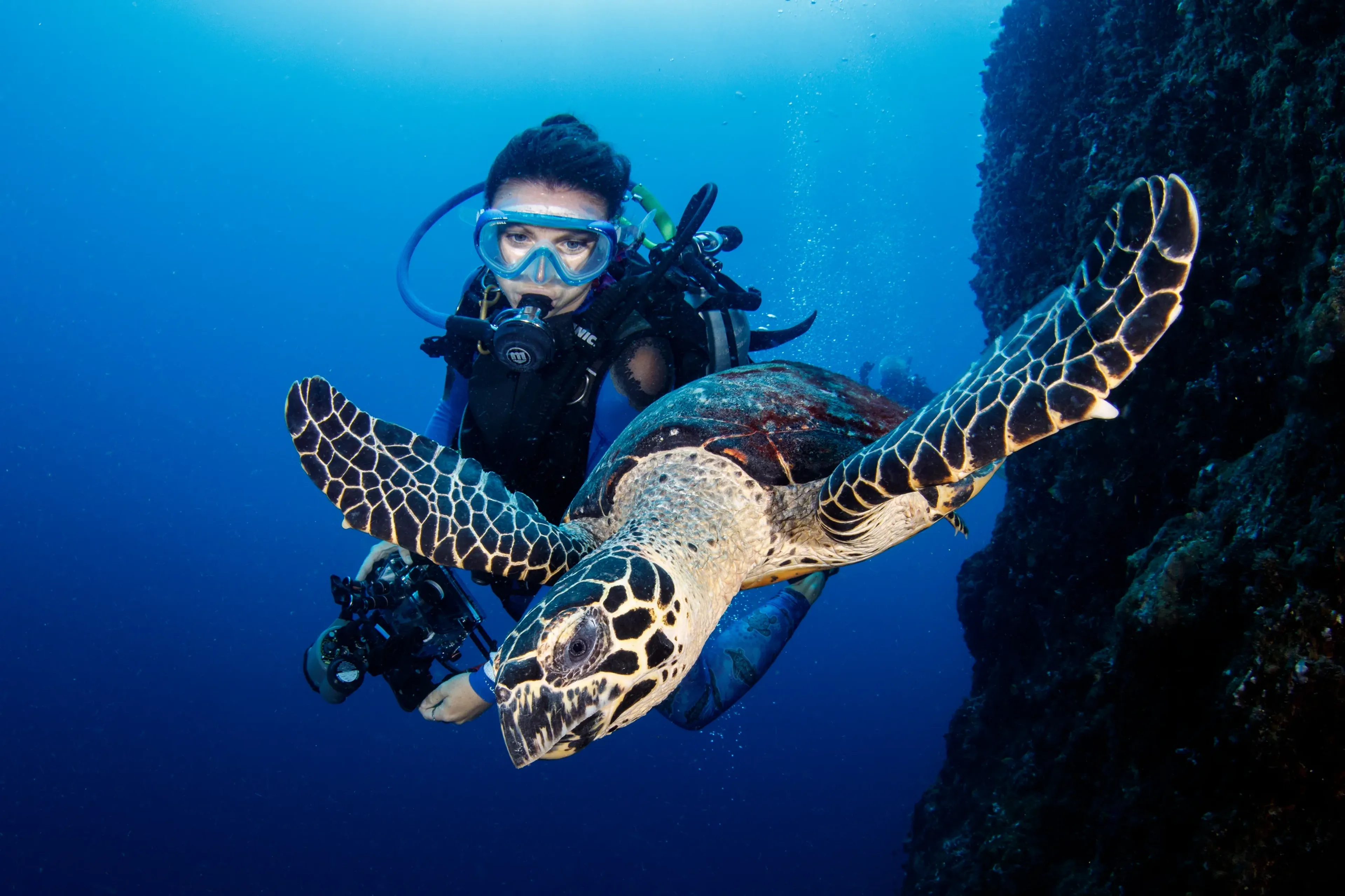Dive in Legendary Papua New Guinea!
Why We Love It
Papua New Guinea is truly off the beaten path! At the heart of the Coral triangle, dive on colorful coral reefs in pristine seas. The Bismarck Sea is considered one of the most biologically diverse areas on Earth. Get ready to dive over some of the healthiest coral formations on the planet, see schools of pelagic fish and an incredible macro life. Silvertip, reef and hammerheads sharks, pilot whales, resident pods of dolphins, sperm whales, and even orcas are all frequently sighted.
Conservation
This dive operator - a pioneer in PNG dive tourism - created "Mahonia Na Dari" or "Guardian of the Sea" NGO along with The Nature Conservancy in 1997, touching thousands of students, teachers, and local communities.
Who Is It For?
For divers of all levels who have been everywhere else on the planet.
Prices and Dates
Loading...
-
The Signature Itinerary (9 and 10 nights) covers the three most popular diving areas of Kimbe Bay, Witu Islands, and Fathers Reefs
-
The Mid Year Itinerary is shorter (8 nights) and covers Kimbe Bay and either Fathers Reefs or Witu Islands
Dive Briefing!
Marine Life
- Papua New Guinea holds five percent of the world’s biodiversity, with more than 800 species of coral, 600 species of fish, 20,000 plant species, and 750 species of birds
- Papua New Guinea will triple the Bismarck Sea Marine Protected Area by 2021, reaching 7,500 square kilometers
- The Bismarck Sea supports one of the most diverse and healthy ecosystems on the planet, with stunning formations of hard coral, plenty of gorgonian fans and sea whips, beautiful coral bommies, hundreds of fish species, and an incredible macro life
- Plenty of macro and big life, ideal for photographers and thrill-seekers:
- Nudibranch, crustaceans, and invertebrates
- Pelagic fish: barracudas, tunas, jacks, and trevally
- Sharks and rays: silvertip, reef, hammerheads, eagle rays
- Pilot whales, sperm whales, dolphins
- Various turtle species
- Whale sharks in season
- Occasional sightings of orcas
Dive Conditions
- Season: Year-long, with different itineraries depending on the month of the year. Peak season is from mid-September, October, and November, along with April, May, and June
- Currents: None to mild
- Visibility: 30 to 50 m (98 to 164 ft)
- Water Temperature: 28° to 31°C (82° to 88°F)
- Depth: Deep and shallow dives
Dive Sites
- The sites will depend on the time of the year and local conditions, with various itinerary throughout these areas:
- Kimbe Bay: Offers stunning reef formations with sea mounts, falls covered with healthy corals, and beautiful coral gardens. This area is where the famous intact Japanese Zero fighter is
- Witu Islands: North West of Kimbe Bay, with some black sand bays, offering both an intense pelagic life and lots of critters
- Fathers Reefs: Offshore reefs with an intense pelagic life, plenty of swim-throughs, and beautiful coral formations
- Rabaul: A macro photographer paradise with plenty to see: the rare mandarin fish, harlequin shrimp, ghost pipefish, and nudibranchs
- Milne Bay An area that will please all types of divers, with drop-offs, wall dives, swim-throughs, and overhangs, some drift dives and also some sandy bottom dives and muck dives
The Team
- New catamaran boat from the pioneers of diving in Papua New Guinea, operating there since 1983
- Courses available on board: Ask us
- Languages spoken: English, Tok Pisin, and Hiri Motu
- Maximum number of divers per guide: 4
Safety Information
- Equipment Recommended: 3 mm wetsuit
- Insurance: Both dive insurance and travel insurance are mandatory. We recommend DAN Europe that has plans to cover both - ask us for a quote
- Nearest Hyperbaric Chamber: Port Moresby
Visas, Flights, and More!
Visa Requirements
- To be able to enter Papua New Guinea, your passport needs to be valid for at least 6 months from the date of arrival, you'll need a return ticket within 30 days, and you'll have to pay for a visa on arrival - around $30 (about ... EUR)
- Some citizens may have to apply for an e-visa before arrival, please check the current visa policy that applies for your country
- For official visa information, visit the Immigration & Citizenship Authority of Papua New Guinea
How to Get There
- Fly to Jacksons International Airport (POM) in Port Moresby directly from Brisbane, Perth, Hong Kong, Tokyo, or Nandi
- You will then have to take a local flight to another airport in Papua New Guinea. The airport will vary depending on your trip itinerary - ask us
- Departure time on the liveaboard is no earlier than 6 p.m. on the first day, and disembarkation is no later than 9 a.m. on the final day
More...
- Bring reef-safe sunscreen, a hat, mosquito repellent, and a rash guard to protect from the sun
Destinations
Right Season
Dive Operators
Booking Fees

